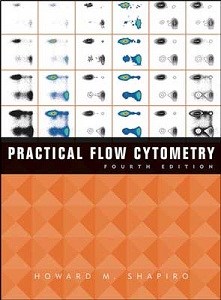What is Flow Cytometry?
Flow Cytometry enables the discrimination and quantification of the fluorescent properties of particles. Typically these particles are either eukaryotic or bacterial cells but also can be any material of a size ranging from about 0.5 – 30uM. As the sample flows through a fluidics buffered stream in a single file line, events are interrogated individually for their fluorescent properties. These properties can be fluorescent dyes, fluorescent labeled Ab’s, or endogenous fluorescent proteins.
Individual events are then able to be analyzed for up to 13 different parameters, making it possible to look at the entire profile of a cell within a population or sub-population. These parameters are measured both for specific fluorescent labels, but also for the intensities of those labels.
With the ability to quantify up to 70,000 events per second, the amount of data that can be acquired from a single flow cytometry experiment is almost limitless. The precision of flow cytometry and the ability to “see” what characteristics your sample possess makes in an invaluable tool for all researchers working with single particle suspensions.
Learning Flow



